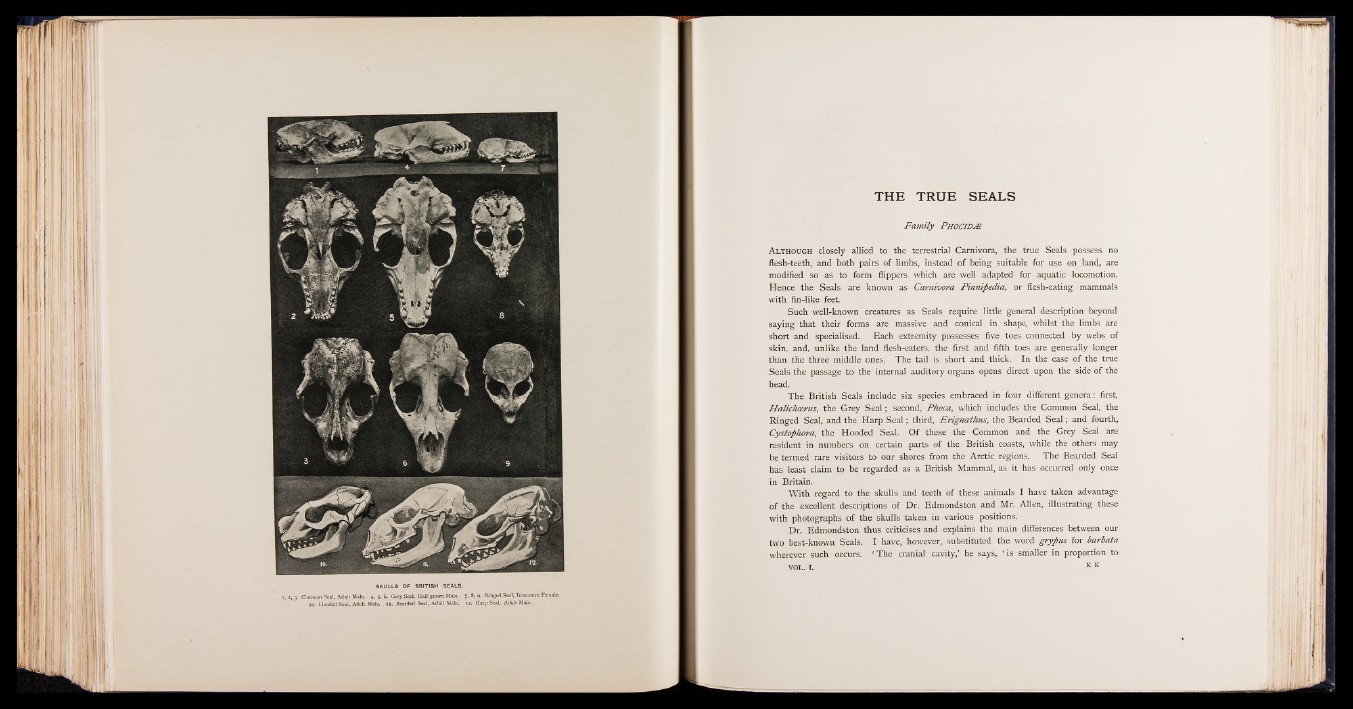
THE TRUE SEALS
Family Phocid^e
A l t h o u g h closely allied to the terrestrial Carnivora, the true Seals possess no
flesh-teeth, and both pairs of limbs, instead of being suitable for use on land, are
modified so as to form flippers which are well adapted for aquatic locomotion.
Hence the Seals are known as Carnivora Pinnipedia, or flesh-eating mammals
with fin-like feet.
Such well-known creatures as Seals require little general description beyond
saying that their forms are massive and conical in shape, whilst the limbs are
short and specialised. Each extremity possesses five toes connected by webs of
skin, and, unlike the land flesh-eaters, the first and fifth toes are generally longer
than the three middle ones. The tail is short and thick. In the case of the true
Seals the passage to the internal auditory organs opens direct upon the side of the
head.
The British Seals include six species embraced in four different genera: first,
Haliphcerus, the Grey Seal; second, Phoca, which includes the Common Seal, the
Ringed Seal, and the Harp Seal; third, Erignalhus, the Bearded Seal; and , fourth,
Cyslcphora, the Hooded Seal. Of these the Common and the Grey Seal are
resident in numbers on certain parts of the British coasts, while the others may
be termed rare visitors to our shores from the Arctic regions. The Bearded Seal
has least claim to be regarded as a British Mammal, as it has occurred only once
in Britain.
With regard to the skulls and teeth of these animals I have taken advantage
of the excellent descriptions of Dr. Edmondston and Mr. Allen, illustrating these
with photographs of the skulls taken in various positions.
Dr. Edmondston thus criticises and explains the main differences between our
two best-known Seals. I have, however, substituted the word grypus for barbata
wherever such occurs. ‘ The cranial cavity,’ he says, ‘ is smaller in proportion to
VOL. I. K K